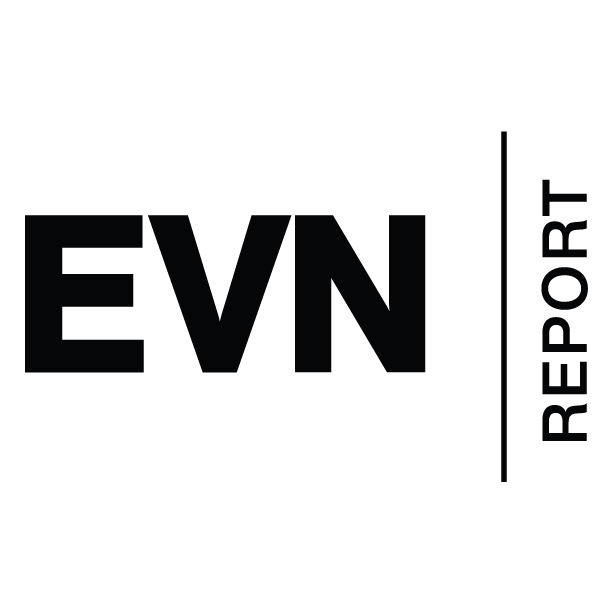

“Do good and throw it in the water.”
Often used to motivate people to do good deeds for their friends and neighbors, this phrase is one of the most well-known Armenian proverbs. It encourages people to do good without expecting any compensation or recognition in return. While it is mostly used in a colloquial sense, the spirit of the proverb resonates with the concept of volunteerism. Volunteering one’s time, energy, or expertise without expecting anything in return can be understood as “doing good and throwing it in the water.” But volunteering diverges from this understanding because it brings undeniable benefits to both the person doing the “good deed” and the “water.”
The positive impact of volunteering on the physical and mental wellness of the volunteer is well-researched, and it is widely accepted that volunteering improves the subjective health, wellness, and social relations of the volunteer. But the impact of volunteering does not end with the volunteer. Volunteerism also greatly benefits the communities and societies where it takes place, ensuring sustainable capacity development and building social capital.
Volunteerism has been present in society for quite a long time. Although the concept gained popularity only in the past few decades, the act of volunteering had been around for centuries before. The noun “volunteer” emerged in the 1600s from the Middle French voluntaire which meant “one who offers himself for military service.” By the 1630s, the military understanding of the word was dropped and it took on the meaning it still retains. The UN has defined volunteering as “a wide range of activities, including traditional forms of mutual aid and self-help, formal service delivery and other forms of civic participation, undertaken of free will, for the general public good and where monetary reward is not the principal motivating factor.” This is quite a broad and inclusive definition of volunteering and different types of activities can fall under its scope of volunteerism, from planting trees to leading summer camps to volunteering with nonprofits. The common denominator among all volunteering actions is the commitment to the “general public good” where the benefit of others takes primacy over the volunteer’s own interests, akin to the spirit of “doing good and throwing it in the water.”
Volunteering for the “general public good” is a very powerful resource. Several organizations were established with a core group of volunteers and expanded to become internationally renowned, credible institutions. Perhaps the most well-known volunteer-run organization is the Red Cross and Red Crescent movement. It was established in 1863 by the Swiss businessman Henry Dunant who proposed the creation of national relief societies composed of volunteers trained to provide “neutral and impartial” aid in times of war. Consequently, volunteers became the cornerstone of the entire Red Cross and Red Crescent movement. The Armenian Red Cross National Society was established in 1920, coming to the rescue of refugees from Western Armenia and combating widespread disease and suffering. Today, the Armenian Red Cross is a prolific organization that continues to help the Armenian population overcome various ailments and disabilities with the help of volunteers. The spokesperson of the Armenian Red Cross notes that they have 2,500-3000 volunteers annually.
This may seem like a small number, but it is significant considering that volunteering culture is not very well developed in Armenia. In 2016, the total number of volunteers in Armenia was 26,559, according to the latest data by UN Volunteers. That’s approximately 1.2 percent of the population, a very meager number. One explanation is that societies in post-communist countries such as Armenia have a negative perception about volunteering. According to the Global Review on Volunteering Report by the International Federation of Red Cross and Red Crescent Societies, this is a result of coercive or mandatory volunteering that existed during the socialist era.
The negativity associated with volunteering continues to cause low levels of volunteering in the regions, especially within older groups. For example, the number of Red Cross national society volunteers per million of the population in Armenia falls below that of Georgia, Uzbekistan, and Tajikistan, but is above that of Azerbaijan, Russia, and Ukraine. However, the spokesperson of the Armenian Red Cross mentioned that there is an increased interest in volunteering by the youth, especially because volunteering has begun to boost their prospects with universities and workplaces.
This is an important trend because a strong volunteering culture can be very beneficial for society. Research has shown a visible connection between volunteerism and the development of capacity and social capital. Because of this connection, volunteering has the unique potential to impact the long-term sustainability of communities, initiatives, and organizations.
Volunteering and Capacity Development
There is a positive association between volunteerism and sustainable capacity development which is studied in depth in the UN Volunteers “Volunteerism and Capacity Development” report. This is especially relevant to formal volunteerism in various organizations. Volunteerism affects capacity building positively and in a sustainable manner because it promotes local ownership throughout the process.
Rather than a unidirectional flow of expertise from a “capacity developer” to a recipient, volunteering promotes an exchange of knowledge and skills between the volunteer and the host organization. This makes the capacity development process a shared experience between the volunteer and the organization. Volunteers are also better placed than external experts to utilize and build on organizational knowledge. As well as utilizing organizational knowledge, volunteers are more flexible in tailoring the capacity development process to the needs of the host organization, whereas external experts often follow the directive of foreign donors instead. As a result, the built capacity becomes the organization’s own, instead of being imported or borrowed from an external source.
Additionally, volunteers often work across various levels within capacity development. This involves working in a program from its initial phases to its conclusion, and building it from the bottom up in cooperation with the host organization. Working this way results in greater synergy which not only improves the quality of the final product but also its sustainability. Such an impact is unique to volunteering.
Volunteering and Social Capital
Volunteering on the community level contributes to the strengthening of social capital. The 2018 State of the World’s Volunteerism Report by UN Volunteers states that “volunteerism is particularly effective in building social cohesion and strengthening solidarity within and between groups as well as in forming networks and relationships.” Collective action within a community working towards shared goals and beliefs enhances the trust and solidarity among the members of the group. Through collective action, community members share the responsibility for their common problems and cooperate voluntarily to implement solutions, strengthening the sense of solidarity in their community. Sharing responsibility in this way develops the resilience of the community, especially when people come together to work towards issues that the government has failed to address.
Volunteering can also bring together fragmented communities through social interactions rooted in volunteerism. Volunteering towards a common cause can redefine relationships and build new ones while strengthening social bonds. Even in non-fragmented communities, volunteerism strengthens pre-existing shared bonds and forges new modes of interaction. The impact of volunteering on human relationships strengthens the social capital of any community. By making communities more trusting, resilient, and cohesive, volunteering strengthens and enhances the social capital of that community.
One initiative with the potential to have this effect on Armenian communities is the “Clean Armenia” program organized by the Ministry of Territorial Administration and Infrastructure. The program, initiated in 2017, is a broad-based collaboration between the Armenian state, communities, and private sector to mobilize citizens across the Republic of Armenia – in a volunteer capacity – to clean the garbage and prevent it from piling up. Through a series of nationwide community cleanup drives organized on Saturdays [համապետական շաբաթօրյակ], citizens in all regions of Armenia work together to clean up litter and garbage that are found in their communities. In July 2017, 100,000 volunteers from all over Armenia participated in one of the first cleanup drives. There have been two drives this year, one on March 23 and the other on June 8. These cleanup drives build social capital not only on a community level but also on a nationwide level, and they empower citizens to take part in building the Armenia they want to live in.
The impact of the cleanup drives extends beyond the day of the cleanup. Serine Mirzoyan from the Community Council of the town of Berd in the Tavush region noted that the cleanup drives have made the residents of Berd more attentive about their environment and their role in keeping it clean. “Berd has become much cleaner than it was before,” Mirzoyan said. “The drives have also enhanced the unity of the community because strangers often help each other clean.”
The Legal Framework of Volunteering
Initiatives like “Clean Armenia” can go a long way towards planting the seeds of volunteerism in the country. But in order to further promote volunteerism and develop a long-term culture of volunteering, an enabling legal framework is necessary. The 2018 State of the World’s Volunteerism Report found that legislation and policies about volunteerism are vital to encourage volunteering. This kind of a legal framework remains absent in Armenia.
To support volunteering, Armenia needs legislation that defines volunteerism, its scope, and the activities it involves, without prohibiting or restricting volunteering. Regulations about the individuals who are permitted to volunteer and how long they are permitted to do so are also necessary. Such regulations protect the rights and prevent the exploitation of both volunteers and beneficiaries. For example, under Bosnian law, it is forbidden to volunteer for more than 40 hours per week during more than six months without interruption. In Denmark, the criminal records of all volunteers working with children are screened for sentences of sexual abuse on children.
Regulating the issue of volunteer remuneration is also important. For example, under Hungarian law, transportation, food or accommodation provided to a volunteer or reimbursement of such expenses against receipts, is not considered as remuneration. In Poland, volunteers are eligible for compensation in case of an accident when providing services. These regulations protect the volunteer and promote the act of volunteering. In fact, legislation can even act as an incentive for volunteering. For example, in Tunisia, at the end of the contract, the organization has to deliver a certificate to the volunteer indicating the nature of the voluntary activity, its duration, the training received, and the acquired competence.
Giving away one’s time and energy freely is a truly transformative act because doing good and throwing it in the water causes a ripple effect. Volunteering is powerful because of the tremendous impact it can have on individuals, societies, and organizations. To enhance capacity development and build social capital, volunteerism needs to grow. A supportive legal framework and initiatives that promote volunteering are important because they will help Armenia cultivate volunteerism, which in turn will contribute to the development of Armenia.
This project is funded by the UK Government’s Conflict, Stability and Security Fund.
The opinions expressed are those of the author and do not necessarily reflect the official position of the UK Government.



